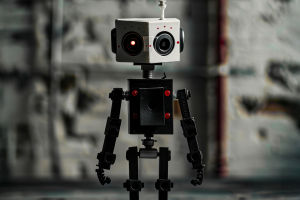In today's ever-evolving world, the presence of robots is no longer confined to science fiction or industrial factories.
They are slowly but surely integrating into daily routines, influencing how we live, work, and interact with our surroundings.
But how close are they really? Let’s break it down!
Robots in Daily Domestic Life
In 2025, home robotics has grown far beyond cleaning. Some robotic systems now support elder care, offering fall detection and medication reminders. Interactive companions use sensors and machine learning to adapt to household members’ habits, adjusting lighting, temperature, or even suggesting daily schedules based on mood and activity.
Still, full autonomy in domestic spaces remains a technical hurdle. Uneven surfaces, unpredictable obstacles, and complex social environments present ongoing challenges. Yet, with multi-modal perception and better spatial navigation, developers are closing these gaps steadily.
Impact in Workplaces and Industry
The industrial sector has long relied on robotic arms for repetitive tasks. However, today’s robotics has entered more nuanced territory. Collaborative robots can share space with humans, responding to real-time changes without posing safety risks. They assist in logistics, food production, and micro-manufacturing.
In offices and service industries, mobile units equipped with vision and language systems are now used for deliveries, document transport, and security patrols. While their efficiency is undeniable, ethical and employment concerns have risen alongside their integration.
Healthcare Robotics: A Critical Transformation
Hospitals increasingly utilize robots not just for surgery, but also for disinfection, sample handling, and rehabilitation. With precision-based programming, robotic devices are reducing human error and infection risks. Remote presence bots even enable consultations across distances, expanding access in under-served regions.
However, empathy remains a boundary. Machines can replicate touch but not emotional intuition—yet. Research into affective computing aims to bridge this, but human care remains irreplaceable for now.
Education and Child Interaction
Robotic companions in classrooms are no longer prototypes. Some educational institutions employ child-friendly robots that support language development, emotional expression, and STEM learning. These machines can adjust to individual students’ pace, offering personalized reinforcement.
Parental concerns about dependency and social isolation have led to cautious, controlled implementation. The emphasis is on supplementing, not replacing, the human role in education.
Public Infrastructure and Smart Cities
In urban areas, robots are beginning to contribute to mobility and maintenance. Sidewalk delivery bots navigate complex pedestrian spaces, while drones assist in surveying infrastructure. Public transit systems experiment with robotic information agents to guide passengers. Municipalities are also experimenting with robots in waste management, using vision and AI to sort materials and increase recycling efficiency.
Psychological Distance: Are We Ready?
Even as robots become physically closer, psychological acceptance varies. Some populations welcome robotic interaction, especially when framed as helpful or efficient. Others view them as intrusive or dehumanizing. Culture, age, and social context strongly influence these perceptions. Bridging the psychological gap may be just as crucial as perfecting the technology.
Robots are far from a futuristic novelty—they’re already intertwined with modern life. Their evolution from tools to partners is well underway. While limitations in empathy, judgment, and social nuance remain, breakthroughs in perception, mobility, and interaction hint at a near future where robotic presence is as common as smartphones.
The question may no longer be how far are robots from our lives, but how ready are we to coexist with them fully?


